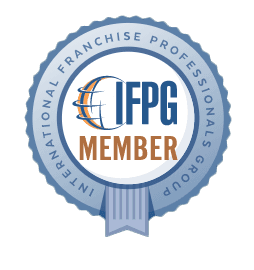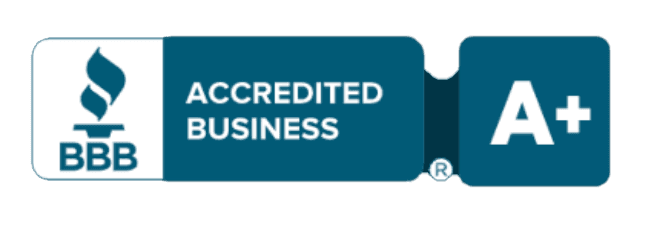Best Real Estate Accounting Tips for Agents and Brokers

Editor’s Note: This post was originally published in November 2019 and has been revamped and updated for accuracy and comprehensiveness. As the owner of a new real estate business, you’re probably aware of the unique characteristics of your industry. You take a personal interest in the real estate market, and you are excited to do great work for your clients, whether buying or selling pieces of property. But here’s the thing—running a real estate business is about more than making great deals. Accounting plays a major role in staying organized, managing taxes, and making smart decisions in any business. Why accounting is important for real estate businesses Setting up your real estate accounting system the right way will enable you to minimize the labor and stress involved in large-value transactions, extreme income fluctuations, employee pay formulas, and government regulations. These tips are for you if your business is: Real estate broker or agent Property management Building construction Residential sales Real estate investment management Another reason to keep accurate financial records is that you will probably have to show them to interested parties at some point. These entities include: Lenders Shareholders Creditors Government bodies (e.g., the IRS) There are many motivations to keep accurate books. And, contrary to popular belief, doing so does not have to be a major headache or hassle. With a service like xendoo, you can outsource your bookkeeping and tax work to focus on what you do best. For more information, check out this post on how to choose the right software to simplify your real estate accounting. Learn the Regulations Did you know that it is not just real estate transactions that local and state commissions oversee? These bodies also oversee the financial management of a real estate business, so playing by the rules is essential. Therefore, it’s a good idea to familiarize yourself with their requirements before making any decisions about your bookkeeping system. If the language is unclear, consult a professional accountant who specializes in real estate. It’s far better to spend extra time setting up your accounting procedures properly at the start than trying to untangle a mess when you run into trouble later on. Choose Who or What Will Do Your Real Estate Accounting For real estate professionals, the most viable options are: Hire an accountant as a full-time employee Outsource accounting services Accounting software used by management or other designated employees Hiring an accountant to work in-house is undoubtedly a powerful approach, but it will be costly and likely beyond the scope of many real estate businesses. On the other end of the spectrum, acquiring accounting software to manage the books yourself or amongst your team might be difficult if no one has proper accounting training or the time to dedicate to ensure your books are up to date. Even minor accounting mistakes can add up to bigger ones down the road. It’s the middle ground – outsourcing accounting tasks to a third party like xendoo – that will make the most sense for many real estate agents and brokers. This option keeps the costs down while still freeing up your time and utilizing experts to make sure the work is done properly. Select Your Accounting Method You have two choices: cash basis or accrual. Once you make a choice, you must stick with it, unless you submit a change request to the IRS. (Your first tax return shows the IRS which one you chose in the beginning — you don’t have to submit any forms for that.) Cash basis accounting is often preferred by small businesses because it’s easier to maintain, and it tells you how much money you actually have in the bank on any given day. Accrual accounting is usually the choice of larger companies because it portrays a more accurate portrait of your real estate business’s financial performance. Accrual accounting also allows you to better your long-term plan, which is helpful if you are thinking about expanding your business. Create a Chart of Accounts This complete index of your company’s transactions is essential for knowing how you stand. It will save you many hours of work when you need to measure performance, generate a report, locate past transactions, or prepare tax returns. The chart of accounts is organized into categories for easy sorting and retrieval. These categories can be anything you need. Under Assets, they might include Cash, Accounts Receivable, and Vehicles. Under Liabilities, you might have sub-accounts such as Accounts Payable, Loans, and Payroll. Keep Business and Personal Transactions Separate Don’t fall into the bad habit of pulling out your business credit card or checkbook to pay personal expenses — or vice versa. Without fail, it will cause more problems than it solves, including inaccurate books, tax mistakes, and cash flow issues. Real estate accounting shouldn’t be complicated, and this is one of the golden rules that can keep things simple—don’t make personal purchases with business accounts. Opening a separate bank account and a credit card strictly for your business will also make you look more professional to your customers, creditors, and investors. Fool-Proof Accounts Receivable Collecting payments that are owed is one of the biggest headaches for small businesses. Prevent delayed and missed payments with an automated invoicing system that: Sends invoices promptly Includes all the necessary information Offers several convenient ways to pay Tracks and contacts delinquent payers With an automated system in place, you’ll save time and avoid missing out on revenue that slipped through the cracks when you were too busy to track it down. Reconcile Your Bank Account Every Month Reconciling your bank account means checking that the transactions listed on the bank statement match what you have in your books. This process will identify any discrepancies so you can figure out why they happened and make a plan for avoiding those issues in the future. Usually, it’s something simple like a financial transaction that’s recorded in your books, but the bank hasn’t processed it yet. However, it could be
Best Business Structure for Consultants

As a professional consultant, you spend plenty of time determining how other businesses work. But, how much time have you put into determining the shape of your own business? Choosing the best legal entity for your enterprise will help minimize your risks and maximize your profits. That way, you can concentrate on consulting. What’s best for your business? That depends. The type of legal entity you choose can affect how hefty your pile of paperwork and administrative duties are, the amount you pay in taxes, and how exposed you are to personal liability in the event of a lawsuit. You don’t want damages that coming out of your own pocket, either in the form of cash or seized assets. The Most Common Legal Business Structures for Consultants There are four primary types of business structure you’ll want to consider for your consulting business. Here is a breakdown of what makes each unique: Sole Proprietorship If you’re the only person involved in your consulting business and if your business is not incorporated, you’re probably already a sole proprietorship. This is usually the case if you’re freelancing or acting as an independent contractor. What’s great about a sole proprietorship is that, typically, very little paperwork is required. You don’t have to register as a sole proprietor with your state. You may, however, need to file a DBA certificate if you’re operating your business under a name different than your own. DBA stands for “Doing Business As”. Depending on where you operate, your state may require DBAs to obtain certain licenses and permits. In the eyes of the law, sole proprietorships are considered to be “pass-through” entities. This means that both your business and personal assets and liabilities are considered one in the same. As a result, you don’t have to file a separate tax return for your business; the profits and losses of that business simply pass through directly into your tax return. When tax time comes around, you just report the business income and expenses on your individual Form 1040, Schedule C. Easy enough. But, keep in mind you will be responsible for withholding necessary income taxes like self-employment taxes, which pay for Medicare and Social Security. The biggest knock on operating as a sole proprietorship is that it exposes your personal assets to risk. For instance, if a client blames your consulting for financial losses and sues for negligence, your personal assets, including your bank account and house, could be up for grabs if they win. That’s a risk you need to make certain you’re prepared to take. Limited Liability Company It may surprise you to learn that Limited Liability Companies (LLCs) are not incorporated businesses. Instead, they’re unincorporated structures that involve one or more owners. Like a sole proprietorship, all of the LLC’s profit and losses pass through to the owners’ individual tax returns. Personal income and self-employment tax also need to be withheld by each owner. There is also more paperwork involved. The Secretary of State requires you to file the Articles of Organization (there is a fee). And, it’s considered good form to draft an operating agreement for your LLC. This agreement lays out what is expected of each LLC owner. So, why form an LLC? Unlike sole proprietorships, LLCs offer better asset protection, including shielding owners from personal liability. This can happen if your business gets sued for negligence, caught up in illegal activity, or in the event, one of your co-owners is found responsible for personal wrongdoing. The only way your personal assets are at risk is if the operation of the LLC “pierces the corporate veil” and it is determined that there is little difference between the owner’s assets and those of the business. In that event, personal assets can be taken. To avoid this, it is important you distinguish yourself from your business, starting with keeping separate bank accounts. A good rule of thumb is to form an LLC only if there is more than one owner. That’s because a single-owner LLC is generally treated as a “disregarded entity”, where business and personal assets and liabilities are not considered to be separate from each other. S Corporation An S Corporation is an incorporated business structure where stock shares are appointed to owners, thus making them shareholders. You can have up to one hundred shareholders in your S corporation. This can be a good structure for consulting businesses, specifically because it can shield your personal assets, as long as you keep business and personal assets separate. To create an S Corporation, the Secretary of State requires new businesses to file articles of incorporation and pay the filing fee. A board of directions must also be appointed. As with a sole proprietorship, the profits and losses of the S corporation flow through to the shareholder’s personal tax returns, where it will be taxed at the individual rate instead of the corporate rate. S Corporations can also pay dividends to shareholders. The benefit here is that those dividends are not subject to self-employment tax, resulting in substantial savings for the corporation. However, if a shareholder provides a service to the S Corporation, the corporation must pay the shareholder a salary, which is taxable. Another benefit S Corporations have is that they avoid the double taxation of C Corporations. C Corporation If your top concern is making absolutely sure you cannot be held personally liable for your business’s actions, then a C Corporation may be for you. These are usually large incorporated businesses with many employees and shareholders. And like S Corporations, C Corporations are required to distribute shares of stock in order to appoint their owners, making them shareholders. As with an S Corporation, the Secretary of State requires you to file articles of incorporation, while also electing a board of directors who will assign business activities to the officers. Your C Corporation will be required to pay appropriate taxes on all profits. In addition to that, all employees of the C Corporation will also
Bullet-Proof Your Accounts Payable with 3-Way Matching

The process of 3-way matching in accounts payable protects your business against incorrect or fraudulent invoices. It mitigates risks in your company’s spending by making sure you don’t overpay for services or fall for counterfeit invoices. It may sound like no one would fall for invoice fraud—when a scammer pretends to be a business partner or vendor and sends a company an invoice for services that they didn’t actually deliver. Usually, it is sent through a business email that might appear legitimate and requests that the recipient send payment through a wire transfer. However, invoice fraud happens more often than you’d think and to some huge companies. A few years ago, Google and Facebook both fell for a fake invoice and paid over $123 million to a Lithuanian scammer. Now, tech giants can afford to go after the scammers in an attempt to recover their funds, which Google and Facebook did. But, most small businesses can’t do that and can face devastating losses when they lose funds to tricks like these. One way that you can protect your business from fraudulent or incorrect invoices is by 3-way matching in accounts payable. In this guide, you’ll find everything you need to know about 3-way matching and how to use it. What is 3-Way Matching? Three-way matching is the process of verifying an invoice is legitimate and the amount is accurate by looking at three documents. Purchase order (PO) Receiving report Supplier’s invoice We’ll go into each of these in detail later, but all three documents are needed to do a 3-way match. A 3-way match verifies invoices by comparing documents to prove your business: Requested products or services in the invoice and it is legitimate Received the types and quantities of goods that the supplier agreed to in the invoice You implement 3-way matching in accounts payable before issuing payment. Although 3-way matching primarily focuses on eliminating fraudulent invoices, it can also save you money by revealing an unintentional human error in a supplier’s invoice. It can tell you the correct amount and type of products you ordered from a supplier and ensure you only pay for what you received. Three-way matching is also part of the procurement process—getting, or procuring, goods and services for your business. What is the Difference Between 2-Way, 3-Way, and 4-Way Matching? While 3-way matching is the most popular method, it’s not the only way to compare invoices with other related documents. Other methods include 2-way and 4-way matching. Let’s identify how they differ. 2-Way Matching If you use 2-way matching, you’re only comparing two documents—the purchase order and the supplier’s invoice. This method may be less time-intensive than 3-way and 4-way matching, but it leaves room for costly errors. Suppose your business needs 150 products and sends a purchase order to supplier X for the required quantity. However, the supplier mistakenly delivers 145 products and sends an invoice to your business for 150 products. Since 2-way matching only compares your purchase order and the supplier’s invoice, you will overpay the supplier for 150 products when you received 145. Because 3-way matching uses a receiving report, you only pay for what you agreed to. In the above example, you’d only pay for what you received—145 products. 4-Way Matching The process of 4-way matching in accounts payable compares four documents. Purchase order Supplier’s invoice Receiving report Inspection information The inspection information is a report that the company uses to determine whether or not to pay for goods after an inspection. It may have a particular product quantity—above or below what it ordered from a supplier—that it can accept. Many companies don’t need 4-way matching because the fourth verification step (inspection report) is nearly always unnecessary to establish an invoice’s legitimacy and accuracy. However, some enterprises may choose a 4-way match to manage frequent and large purchases. How Does 3-Way Matching Work? The 3-way match system tells you if the supplier invoices you’re paying are accurate — either accidentally or on purpose. How does it work? First, you need the three documents mentioned above. Then follow the steps below to verify invoices before issuing payment. 1. Purchase Order You’ll first look at the purchase order for verification. As a best practice, your business should not buy anything without a purchase order prepared in advance and entered into your accounting records. Once counter-signed by the supplier, the purchase order is a legally binding document. It should specify: Names and quantities of items to be bought Price of items Delivery date 2. Receiving Report Once you have a purchase order, you’ll create a receiving report. To create this, you’ll check all the supplies you received and add them to your inventory. Look at the quantity and types of items to make sure it matches the purchase order. The report should then be entered into your accounting software. If you have an accountant or accounts payable staff, they can do this for you. A typical receiving report includes: Date and time of delivery Purchase order number Name of vendor and/or shipping company Description of each item received Quantity of each item received Condition of items received (necessary for returning damaged goods) 3. Supplier Invoice The bill sent by the vendor should match both the purchase order and receiving a report in item names, quantities, and prices. It is the responsibility of accounts payable to make sure these three documents match — and if they don’t, find out why not. Discrepancies may be resolved by having the supplier issue a revised invoice, or in some cases a credit memo. PO vs. Non-PO Invoices When implementing 3-way matching in accounts payable, you should only use (PO) invoices. Non-PO invoices are unsuitable for a few reasons. PO invoices have a purchase order attached to them. They have all the details in a purchase order as well as an order number. On the other hand, a non-PO invoice is when a company buys something without a purchase order. It is also called an expense
How to Choose a Cloud Accounting Provider

Putting your accounting in the cloud offers huge advantages, including speed, accessibility from anywhere, and reduced on-site storage needs. But first, make very sure that your provider meets your standards and requirements. What a Cloud Provider Provides You’re probably familiar with cloud storage for files; it simply means that this data is stored on a server (your company’s or one you contract with) and is accessible from any computer or other device with an internet connection. A cloud provider goes one step further and lets you run applications as well as storing files. It eliminates the need for keeping software on your own machine. Must-Have #1: Digital Robustness It’s critical to keep your financial data safe and secure. The cloud provider you choose should be able to demonstrate: • Its own data center – rather than outsourcing to some other company • Data encryption – to make data useless to hackers • Secured access • Good uptime – ideally 99.95%, or less than 1 hour of downtime per year • Backup systems • Disaster recovery plan Must-Have #2: Financial Robustness You want your provider to be around for the long haul, giving you uninterrupted access and support for your data. Must-Have #3: Universal Compatibility Your cloud service provider should work with a variety of devices, operating systems, and applications that might be used by various members of your team to access the files and software. • Apple iOS and Android mobile devices • Windows PC and Apple Mac desktop and laptop computers • 3rd-party applications (not just those the provider offers) Must-Have #4: Data Exportability Someday, you may want to change cloud providers. You should be able to export your data from their system whenever you want, in a file format that can be used by other software. (This is why you don’t want to get tied into one provider’s apps.) Must-Have #5: Tech Support You want to work with a provider that responds quickly and expertly to any problems that might arise. Read through the company’s online community forum to get an idea of how they value and interact with their customers. Must-Have #6: Scalability As your company grows, the accounting infrastructure must be able to handle your increased need for processing power and data storage. What’s more, your provider should schedule updates and upgrades with you in advance, so that you’re not hit with an unexpected downtime at the worst possible moment. Must-Have #7: Clear Billing Plan The pricing structure should be detailed enough that you won’t be stuck with any surprise charges. For example, will you be using your own internet provider which you’re already paying for, or will there be a dedicated data connection to the cloud that costs extra? Also, look beyond the lowball sign-up cost, which the provider may make up for down the road with steep increases after the initial period. Enjoy Your Cloud-Based Accounting xendoo clients get access to Xero Accounting software, a best in class cloud accounting platform. Take advantage of the convenience and cost savings of accounting in the cloud! [av_sidebar widget_area=’Blog Post Disclaimer’ av_uid=’av-om2w’]
How to Pay Yourself When You’re the SMB Owner

It’s all too easy to dip into the company’s bank account as and when you need to. But there are many good reasons to put yourself on a fixed salary, including simplifying your tax return, protecting yourself from the company’s debt liability…
7 Benefits of Inventory Accounting

If your business sells, resells, or makes new products from purchased stock, then your inventory is probably your biggest asset. The right accounting tools can help you make sure that inventory maintains its value, as well as guide business decisions for maximum success. Types of Inventory First, determine what type of inventory you work with. Items for Reselling The stock of a retail store, or the retail component of a service business such as a hair salon. (Drop shipped products don’t count if you never bought them from the supplier.) Items for Installing Products sold by a service business as an essential part of the job, for example, a computer repair company that sells spare parts. Items for Manufacturing Materials you make into products for sale, for example, fabric, beads, thread, etc. for making wedding gowns. For accounting purposes, they will be assigned to one of three categories: • Raw materials • Work in progress • Finished goods Basics of Inventory Accounting To keep tight control of your inventory, set the right prices, properly insure the stock and do your taxes, you’ll need to track the number of variables. Your accounting software should be able to show you: • Cost of goods • Associated costs including storage, shipping, and losses due to damage or age • Stock on hand • Selling price • Revenue • Profit (or loss) • Items sold • Sales patterns by item and season You must also choose an inventory valuation method for your year-end statement, which will affect both your profits and tax liability. The most common ones are: LIFO (Last In, First Out): Assumes you sell your most recently acquired — therefore most expensive — items first, while leaving older/lower priced stock on the shelf. • Advantage: Increases the cost of goods sold and lowers net income, reducing taxes. • Disadvantage: May does not correspond to the actual flow of goods or replacement costs. FIFO (First In, First Out): Assumes you have perishable or quickly outdated items, so you need to sell the oldest goods first. Also, if selling prices rise, this method will give you a lower cost of goods sold. • Advantage: Makes bottom line look better to lenders and investors. • Disadvantage: Higher profit results in higher taxes. AVCO (Weighted Average Cost): Bases report on the average product cost and average selling price for the entire year. • Advantage: Simpler to do, more accurately represents replacement costs. • Disadvantage: Inaccurate when prices fluctuate severely up or down. Benefits of Inventory Management Now we get to the good stuff: how your accounting system can save money and help you make money, too. 1. Avoid cash flow problems. With stock levels properly tracked, you’ll never tie up too much cash in unneeded inventory. Use that cash to pay other expenses or improve your business. 2. Maximize sales. Know in advance when you’re running short of an item, so you’ll never have to turn customers away. 3. Reduce storage costs. Know which items are slow-selling, so you reorder less often or not at all. 4. Maximize write-offs. Know exactly how much you’re losing to damage, theft, and product expiration. 5. Get bulk discounts. Know what’s selling fast, so you can place larger orders at a lower cost per unit. 6. Get better marketing results. Use seasonal sales trends to build promotions. 7. Optimize profit margins. Fully tracked costs let you see how much you’re making and where adjustments could be made. In short, the better your inventory management system, the more you’ll be empowered to take your business to the next level. If you have any questions about inventory accounting or valuation, please give us a call. [av_sidebar widget_area=’Blog Post Disclaimer’ av_uid=’av-om2w’]
Net Profit and Retained Earnings: What’s the Difference?

Retained earnings are a key indicator of a company’s financial performance. Read on to learn about what they are, how to calculate them, prepare a retained earnings statement, and more. What is the difference between retained earnings, revenue, net income, and shareholders’ equity? Retained earnings represent the portion of a company’s net income that is kept within the business after dividends are paid out to shareholders. It is calculated cumulatively by adding the retained earnings from previous periods to the current period. Revenue, on the other hand, refers to the total income generated from sales before deducting expenses, taxes, and dividends. Revenue is calculated for each accounting period and is typically listed at the top of the income statement. Net income is the profit a company earns after all expenses have been deducted from its revenue. It provides a clear indication of how profitable the business is during a specific period. Shareholders’ equity, or stockholder equity, is the total value of a company’s assets that shareholders own outright after all liabilities have been settled. It includes components such as outstanding shares, common stock dividends, retained earnings, additional paid-in capital, and treasury stock. In summary, while retained earnings represent accumulated profits held by the company, revenue reflects total income before deductions, net income is the profit after all expenses, and shareholders’ equity is the net value shareholders have in the company after liabilities have been accounted for. What are retained earnings? Sometimes called member capital, retained earnings are what’s left from your net profits after you pay out dividends to shareholders. Shareholders are investors who own stock or equity in your business. Dividends are a company’s distribution of revenue back to the shareholders. Sometimes they are paid as a cash dividend. Companies may offer a dividend reinvestment program (DRIP) for shareholders to reinvest the dividends back into company stock, usually at a discount. Typically, your retained earnings are kept in a ledger account until the funds are used to reinvest in the company or to pay out future dividends. You’ll usually find them in one or two places: On a balance sheet under the owner’s or shareholder’s equity section As a standalone report referred to as a statement of retained earnings In rare cases, businesses include it on income statements. Once reported on the balance sheet, retained earnings become a part of a business’s total book value. Why are retained earnings important? Lenders and investors will consider retained earnings even more than net income when deciding whether to trust you with their money. It gives you a clearer picture of your business than just looking at monthly net profit figures, which can vary quite a lot depending on a wide range of factors. It also indicates if and how you should invest money back into your business. If the number is low, it’s better to keep the money in the business as a cushion against cash flow problems, rather than handing it out as dividends. If both are substantial, it’s time to invest in growing your business, perhaps with new equipment or facilities. Both your net profit and retained earnings can help you gauge your company’s overall financial health. What is net income? Also called net profit or net earnings on some profit and loss statements, net income is the money you have left after deducting all costs, including taxes and operating expenses. For example: $70,000 Revenue – $60,000 Costs = $10,000 Net Profit Revenue is the money you receive from selling products or services to your customers. Costs are everything businesses pay such as: Rent & Utilities Employee payroll Office Supplies Bank fees & loan interest Insurance premiums Repairs & maintenance Advertising and marketing Legal & professional fees Taxes Depreciation Keeping track of expenses is crucial for understanding your company’s finances in general, but it can also help you better understand your net profits. For instance, when you track expenses such as those listed above, you can see how each category directly impacts your net profit. You may be able to use this data to decrease wasted spending and increase your profitability. Expense trackers can automate this process. xendoo plans work with Quickbooks and Xero to help you manage business expenses. Retained earnings vs. net income Net income and retained earnings are important to track because they give a picture of your company’s cash flow. While these two terms overlap, they are not synonymous. Net income is the amount you have after subtracting costs from revenue. On the other hand, retained earnings are what you have left from net income after paying out dividends. You need to know your net income, also known as net profit, to calculate it. How to calculate retained earnings You need to know a few things to calculate retained earnings. Your earnings from the previous reporting period Net profit (also called net income) Dividends that you need to pay out Once you have those figures, you can use this retained earnings formula: Beginning Retained Earnings + Net Income – Dividends = Retained Earnings If you do pay dividends, there are some considerations. For instance, say you sold common stock to business shareholders to raise capital. The company is starting to make healthy profits, and it can pay dividends. Once your expenses, cost of goods, and liabilities are covered, you must pay dividends to shareholders. The figure that’s left after paying out shareholders is held onto or retained by the business. $1,000 Beginning Retained Earnings + $10,000 Net Income – $2,000 Dividends = $9,000 Retained Earnings If you don’t have any shareholders, your calculation would look like this: $1,000 + $10,000 – $0 = $11,000 The beginning balance should be zero when calculating it for the first time. 1. What does a negative retained earnings balance indicate about the company’s financial performance? A negative retained earnings balance implies that the company has incurred consistent losses from the previous year or earlier. It indicates that the company’s dividend payouts have exceeded its profits, leading to a
New Independent Contractor? Our 7 Essential Habits for Accounting Virgins

When you’re starting as an independent contractor, accounting practices may not be top of mind. But now is the perfect time to develop those good habits that will save you a ton of hassles and heartaches later. 1. Save Receipts As a business owner, you’re entitled to many tax deductions on expenses, from travel to office supplies to advertising costs. But you can’t claim those deductions (or pass an audit) if you can’t prove they happened. That’s why you need to keep good records. For converting paper receipts to electronic records, you can choose from a variety of receipt scanning and tracking apps, such as Expensify and Shoeboxed. 2. Keep Business and Personal Expenses Separate That purchase on your credit card statement from Best Buy: was it for the office printer or your home TV? Doing your books — and your taxes — will be a nightmare if you lose track of what category your purchases should have been put in. Ways to idiot-proof your bookkeeping entries include: • A separate bank account for the business • A separate credit card for the business • Accounting software that automatically codes entries 3. Back-Up Financial Records What would happen to your business if your computer died or your office burned down? Keep copies of everything (both digital and paper) in a separate location. Many entrepreneurs are moving to cloud-based digital storage, which allows remote access and top-of-the-line security without the need to buy a lot of expensive hardware and software. You may not require much in the way of a bookkeeping system when you’re starting, but you will as your business expands. Choose software that can scale up with additional capabilities as necessary — and save yourself having to make major changes later. 4. Save for Setbacks Don’t plow all your profits back into the business. Set aside a percentage of that cash as a hedge against the unexpected events that could ruin you: the illness that prevents you from working, natural disasters, economic downturn, and so on. There are also the expected large expenses to save for, such as inventory stocking and tax payments. 5. Pay Estimated Taxes Since you’re not working for an employer who takes payroll taxes out of every paycheck, you’re responsible for making your own periodic income tax payments. Estimated taxes are divided up into four payments, one due every quarter. This is easier on the wallet than making one huge payment in April when you file your tax return (however, you can make one annual payment if you’re willing to pay a small penalty). Estimated taxes are filed with IRS Form 1040-ES. Learn how to estimate the payment amount and how to make payments here. 6. Hire the Expertise You Lack Not sure what business laws or tax regulations you must follow? Clueless about bookkeeping formulas? Rather than waste your own time and energy trying to figure it out, it may be more cost-effective to outsource those tasks. At xendoo, we specialize in accounting and bookkeeping for small businesses. An affordable monthly fee puts decades of expertise and industry-leading, cloud-based software at your fingertips. While we do the numbers, you can get back to doing what you do best. [av_sidebar widget_area=’Blog Post Disclaimer’ av_uid=’av-om2w’]
7 Steps for Retailers to Reduce Inventory Shrinkage

Inevitably, somewhere between the manufacturer and the cash register, some of your merchandise disappears. Every retailer has this problem; in fact, it adds up to more than $42 billion in annual losses nationwide. The three biggest causes of shrinkage are administrative errors, employee theft, and customer theft. Here’s how to counteract them. 1. Use a good inventory management system. Wherever human beings are doing the counting, organizing, and recording, errors are sure to happen. Choose software that: Organizes product and vendor information Integrates with your POS system so that inventory data is automatically updated after every transaction Generates accurate purchase orders 2. Tighten up your inventory receiving process. To minimize mistakes: Cross-check against the PO at the time of delivery Call the vendor within 24 hours to resolve inconsistencies Tag and label merchandise immediately 3. Record sales consistently. Any currently available POS system will do this automatically. 4. Take physical inventory. It’s the only way to reveal discrepancies between what your inventory software says you have and what you have. Cross-reference the manual counts against software records to see where shortages are occurring, for example with a particular cash register or employee, or during the same shift and day every week. 5. Train employees in loss prevention. Letting everyone know that you have a strong plan to stop theft can deter both employees and customers. 6. Improve pre-employment screening. The reality of retail is that employee turnover is high and company loyalty usually low. Besides, employees have less supervision and easy access to your valuables. Do your due diligence in hiring people with no history of dishonesty, including nationwide criminal background checks and verification that resumes are complete and truthful. 7. Install a security system. Large, visible cameras act as warnings to thieves to pick an easier target. They also help catch and convict criminals after thefts occur. Inventory shrinkage is a challenge that will never go away. And that means your efforts towards loss prevention can never stop either. Success lies in ongoing processes and continuous attention to keep your merchandise right where it belongs. [av_sidebar widget_area=’Blog Post Disclaimer’ av_uid=’av-om2w’]
How to Choose the Right Software to Simplify Your Real Estate Accounting

Editor’s Note: This post was originally published in June 2018 and has been revamped and updated for accuracy and comprehensiveness. Let’s face it, bookkeeping for a business in the real estate industry is complicated. That holds true whether your niche is sales, management, construction, or tax and legal services. Unlike some other types of business, you must deal with variables like fluctuating income, expenses, payroll, and property values, not to mention a heavy load of government regulations. All these factors must be accounted for completely and accurately to control profit margins, satisfy clients, and be prepared for tax filing. It’s a big hassle if you’re doing it the old-fashioned way, creating custom spreadsheets and writing down transactions in a ledger. However, the right real estate accounting software will do many accounting tasks for you automatically, leaving you free to focus on your core business. Real estate business payroll Processing payroll is a core function for any business. Using accounting software that takes some of the hassles out of completing payroll each period can save you time and keep your records accurate year after year. Your business may have one or more of these types of workers: • Commission • Salary plus commission • Salary • Independent subcontractors As it relates to real estate accounting specifically, choose software with a payroll feature capable of calculating commissions and tracking those amounts for income tax withholding. Similarly, you should categorize payments made to independent contractors, as those are typically not subject to withholding. Real-time remote work tracking Whether your people are out on a building site or showing homes to prospective buyers, a cloud-based management app will give them access to the office. At the same time, the office is tracking their activities. Info on everything from materials used to schedule changes can be updated and shared with everyone in real-time. A system that integrates all departments saves time and money for workers and managers. It also means that data from the field is incorporated into the books automatically, eliminating duplicated effort and potential errors for the accountant. The inherent challenge with real estate accounting is the many moving parts involved—everything doesn’t happen in the same place. Leveraging technology to automatically collect all of this information and incorporate it into a bookkeeping system is sure to lead to better results. Breeze through tax time The topic of taxes will come up again and again in the search for the right real estate accounting software—and for a good reason. Taxes aren’t only necessary because they are a legal requirement but also because they can represent such a significant expense. If your real estate business holds properties, for example, the property taxes alone can take a big chunk out of your bottom line. You can’t get away from paying taxes, of course, but you can use good accounting software and a tax filing service like xendoo to make sure you don’t pay more than your share. Streamline operational expense recording One of the best real estate accounting tips you can receive is to enter all of your transactions each day. Suppose you wait until a week before your tax return is due to get your books updated. In that case, you’ll be facing a major headache and the likelihood that there will be errors beyond tax filing. Keeping your figures up to date will also reveal when and where you’re losing money. This makes it easier to make sound decisions and avoid spending too much time on a losing endeavor. Consider accounting software that integrates with your bank, recording every transaction automatically and saving you a great deal of time and paperwork. Plus, you’ll be ready for an audit any day of the year. Many real estate professionals – and professionals in other industries – feel like they are constantly behind on accounting. The key to getting ahead of the game is not to spend more of your precious time on the task but rather to streamline it using the right real estate accounting software. Financial reports data access Using cloud-based software allows you to see your financial reports or share data with your accountant anytime, anywhere. And with no need for in-house servers to store your data, you’ll mitigate the risk of losing your data and bring down IT expenses as well. If you are currently storing all of the financial data for your business on a single computer in your office, you are playing with fire in terms of data loss risk. Turning to the cloud leaves you with off-site storage that is backed up and secure. Two noteworthy options Most real estate businesses won’t need to take their accounting software search beyond two of the market leaders—Xero and QuickBooks Online. Each of these options includes all of the features you are likely to need to keep the financial side of your business in order. And, as an added bonus when working with xendoo, we can provide you with a discount on either one of these two excellent accounting platforms. xendoo believes that cloud-based accounting is the right choice for any real estate business looking to increase growth while reducing inefficiencies. By automating bookkeeping chores, we eliminate the hassles, the mistakes, and more than half the costs of traditional accounting. Our real estate accounting service will leave your business ready at every moment to meet challenges and seize opportunities for success. [av_sidebar widget_area=’Blog Post Disclaimer’ av_uid=’av-om2w’]





